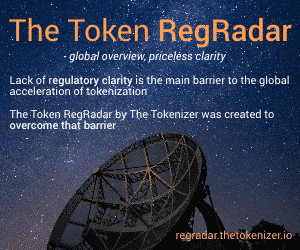Frax Launches frxUSD Stablecoin, backed by the BlackRock’s USD Institutional Digital Liquidity Fund (BUIDL)
Frax Finance, a decentralized stablecoin cryptocurrency protocol, today announced the launch of a new stablecoin, frxUSD, that will leverage BlackRock’s USD Institutional Digital Liquidity Fund (BUIDL), tokenized by Securitize, to deliver a secure, transparent, and fully auditable backing mechanism.
The frxUSD stablecoin, a rebranded evolution of Frax’s flagship FRAX stablecoin, offers direct fiat redemption capabilities and enhanced compliance with U.S. financial systems. As part of the collaboration, BUIDL will become an enshrined custodian asset for minting and redeeming frxUSD. The stablecoin will be uniquely backed by assets held in BlackRock’s BUIDL, which invests in cash, U.S. Treasury bills, and repurchase agreements. This ensures full transparency and on-chain audibility, solidifying frxUSD as the first stablecoin to offer seamless fiat on/off-ramping capabilities via Blackrock’s BUIDL infrastructure.
“Tokenized real-world assets provide an excellent bridge between traditional finance and decentralized finance, bringing institutional-grade investments on-chain with unprecedented transparency and efficiency,” said Carlos Domingo, Co-Founder and CEO of Securitize. “This collaboration exemplifies the next stage in financial evolution, demonstrating how traditional and decentralized systems can work together to redefine asset management strategies. The integration of frxUSD and the BUIDL fund is a clear signal of the transformative potential of tokenization in modern finance.”
“By partnering with Securitize to access and leverage BlackRock’s BUIDL Fund we are setting a new standard for stablecoins,” said Sam Kazemian, Founder of Frax Finance. “frxUSD combines the transparency and programmability of blockchain technology with the trust and stability of BlackRock’s prime treasury offerings. This collaboration is a significant step toward bridging traditional finance with decentralized systems.”
Read other stories: Huarpe Minera LLC Unveils HuarpeToken: Revolutionizing Gold Mining Investments with Blockchain Technology
Matrixdock Integrates XAUm Gold Token with Binance Wallet to Advance Financial Equality
You Might also Like















